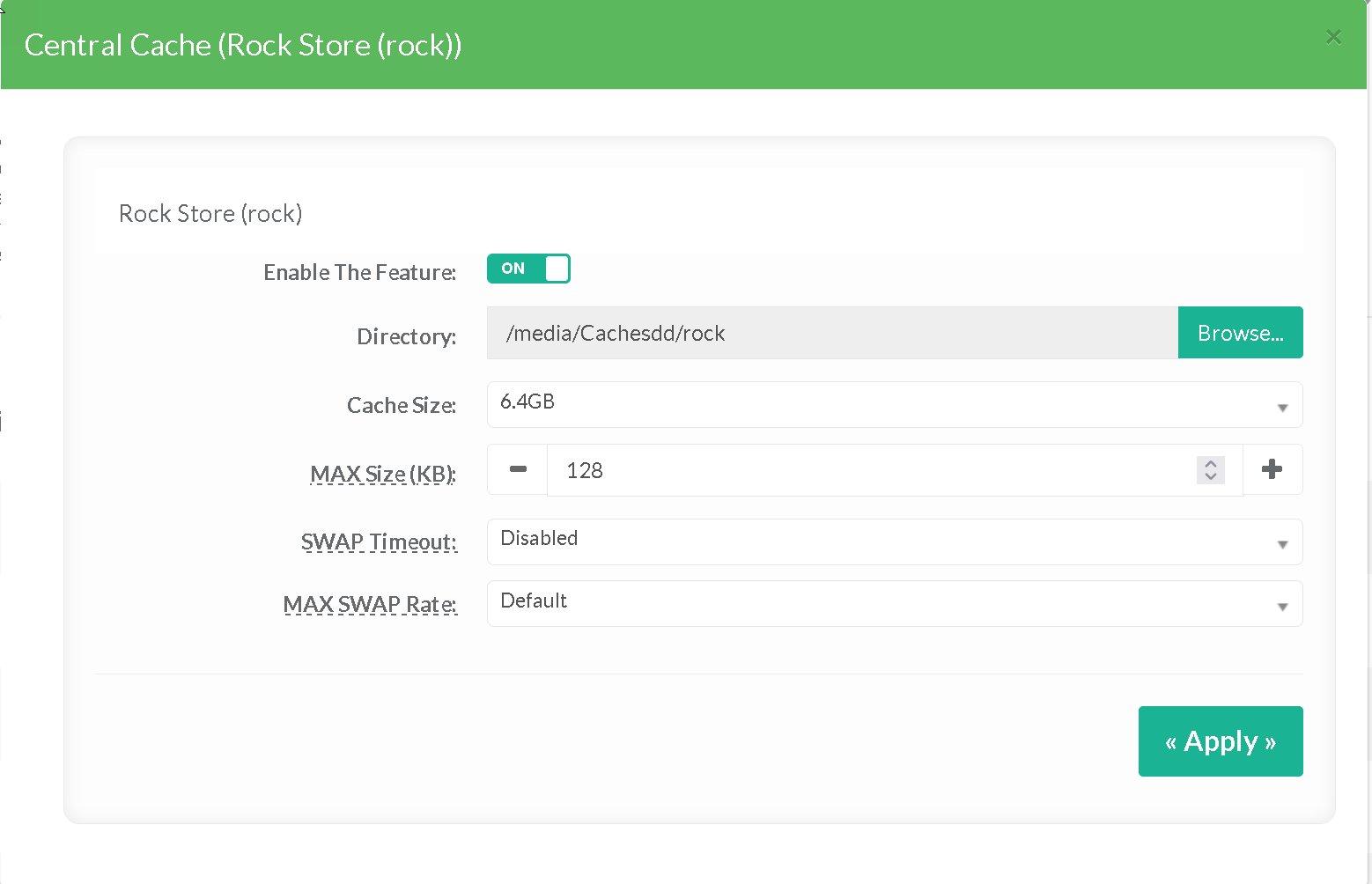Back to Proxy Cache main section
Because of this method, the rock system cache is one of the supported caching methods when using multiple CPUs.
The rock cache has great potential because it allows a single cache to be shared among multiple workers. This is the final piece that makes sharing between workers complete.
All cached objects are stored in a single sparse file as a kind of database.
Since the rock cache is implemented as a separate process, it becomes a performance bottleneck unless you use the proxy's own shared memory cache to cache all objects.
The default Proxy configuration only stores small objects in the memory cache, so you need to change this limit and make the memory cache large.
- On the left menu, choose “
Caching” > “Central Cache” - Note that the main section calculate the maximal size you can use according to your server physical memory.
- Click on the “Inactive” link

- Turn on the “Enable the Feature” option.
- Set the directory to stores caches.
- Choose in the drop-down list the global size of the cache.
- In MAX size, set the maximal size of an object inside the cache.

SWAP timeout: Proxy will not start writing a Cached object to or reading a cached object from disk if it estimates that the swap operation will take more than the specified number of milliseconds.
By default and when set to zero, disables the disk I/O time limit enforcement.
Ignored when using blocking I/O module because blocking synchronous I/O does not allow Proxy to estimate the expected swap wait time.
Max SWAP rate: Artificially limits disk access using the specified I/O rate limit.
Swap out requests that would cause the average I/O rate to exceed the limit are delayed.
Individual swap in requests (i.e., HITs or READs) are not delayed, but they do contribute to measured swap rate and since they are placed in the same FIFO queue as swap out requests, they may wait longer if this value is smaller.
This is necessary on file systems that buffer "too many" writes and then start blocking proxy and other processes while committing those writes to disk.
Usually used together with SWAP Timeout to avoid excessive delays and queue overflows when disk demand exceeds available disk "bandwidth".
By default and when set to zero, disables the disk I/O rate limit enforcement.